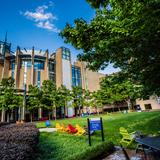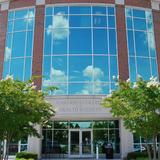- Central Piedmont Community College is an innovative and comprehensive college that advances the life-long educational development of students consistent with their needs, interests, and abilities while strengthening the economic, social, and cultural life of its diverse community.
School Highlights
Central Piedmont Community College serves 24,699 students (28% of students are full-time).
The college's student:teacher ratio of 14:1 is higher than the state community college average of 13:1.
Minority enrollment is 60% of the student body (majority Black), which is more than the state average of 48%.
Quick Stats (2025)
- Enrollment: 24,699 students
- In-state tuition: $2,664
- Out-state tuition: $8,808
- Student:teacher ratio: 14:1
- Minority enrollment: 60%
- Source: Integrated Postsecondary Education Data System (IPEDS)
Top Rankings
Central Piedmont Community College ranks among the top 20% of public schools in North Carolina for:
Category
Attribute
Diversity
Community Size
Debt For Students
School Overview
The teacher population of 1,735 teachers has stayed relatively flat over five years.
Central Piedmont Community College
(NC) Community College Avg.
Carnegie Classification
Associate's Colleges: High Transfer-Mixed Traditional/Nontraditional
Associate's Colleges: Mixed Transfer/Career & Technical-High Nontraditional
Institution Level
At least 2 but less than 4 years
At least 2 but less than 4 years
Institution Control
Public
Public
Total Faculty
1,735 staff
256 staff
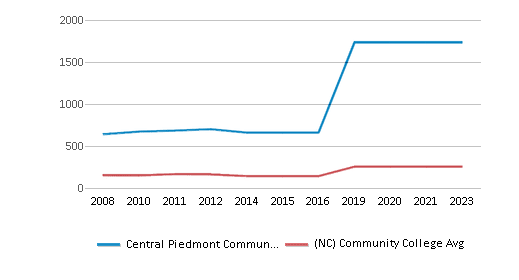
School Calendar
Student Body
The student population of Central Piedmont Community College has grown by 32% over five years.
The student:teacher ratio of 14:1 has increased from 10:1 over five years.
The Central Piedmont Community College diversity score of 0.74 is more than the state average of 0.66. The school's diversity has stayed relatively flat over five years.
Total Enrollment
24,699 students
2,542 students
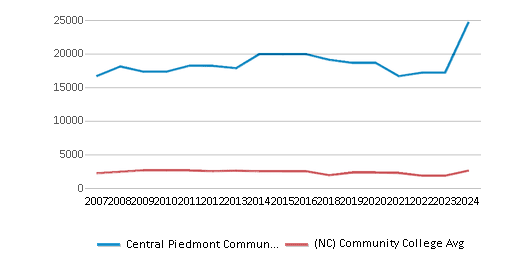
Student : Teacher Ratio
14:1
13:1
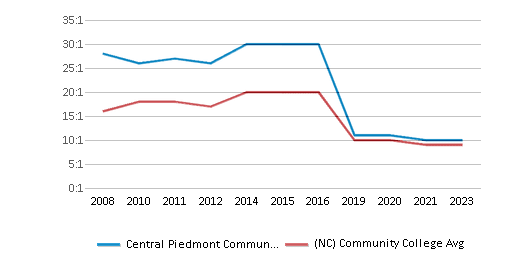
# Full-Time Students
6,961 students
766 students
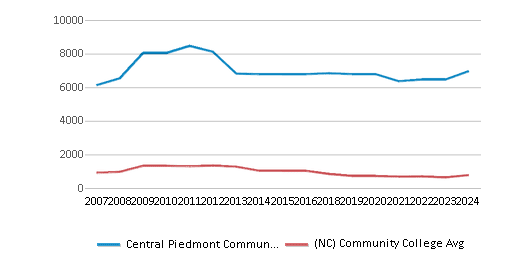
# Part-Time Students
17,738 students
1,813 students

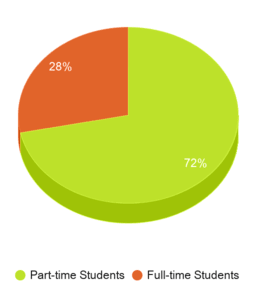
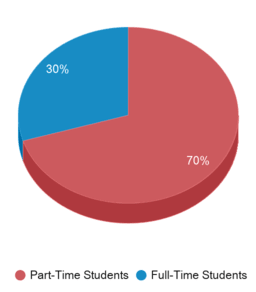
# Enrollment Undergraduate
246 students
316 students
# Full-Time Undergraduate Students
6,961 students
766 students
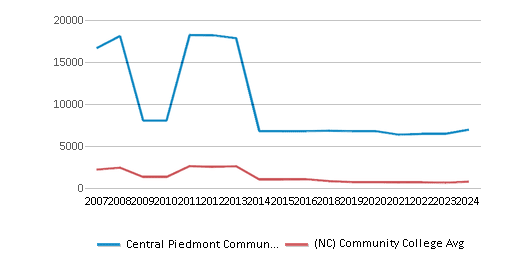
# Full-Time Graduate Students
n/a
22 students
# Part-Time Undergraduate Students
17,738 students
1,990 students
# Part-Time Graduate Students
n/a
3 students
Total Dormitory Capacity
n/a
717 students
% American Indian/Alaskan
1%
1%

% Asian
5%
3%

% Hispanic
15%
13%
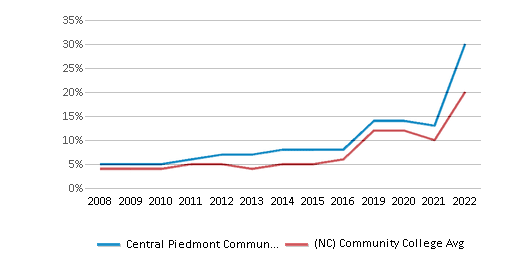
% Black
28%
21%
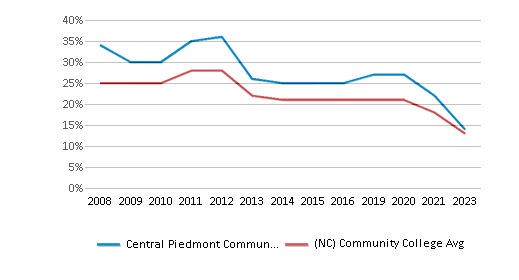
% White
40%
52%
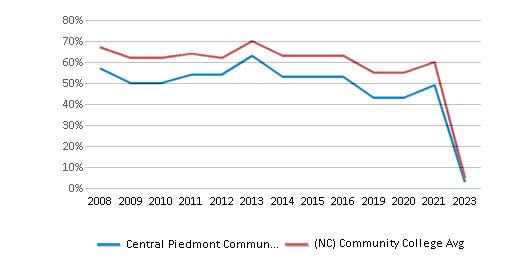
% Hawaiian
n/a
1%
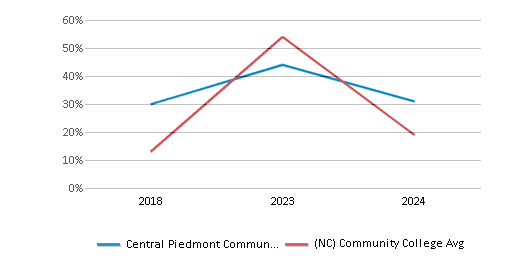
% Two or more races
3%
3%
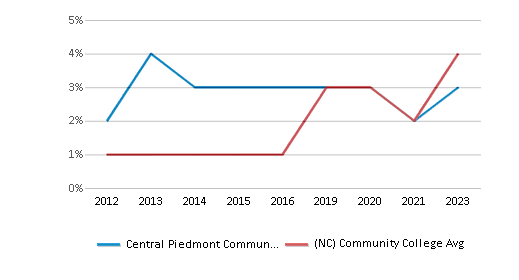
% Non Resident races
5%
1%
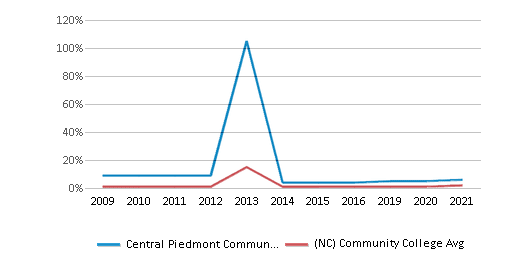
% Unknown races
2%
5%
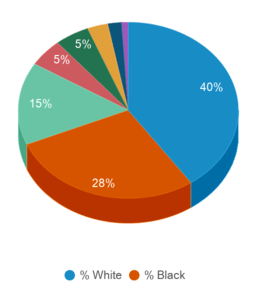
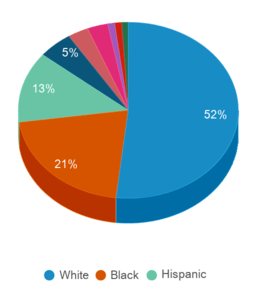
Diversity Score
0.74
0.66
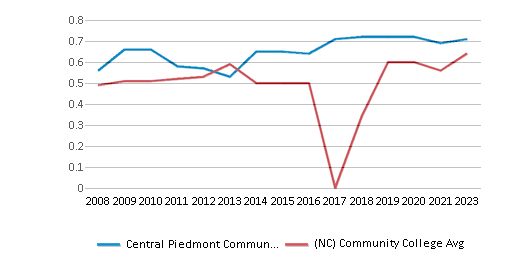
College Completion Rate (Students who graduate in less than 4 years)
0.2273%
0.3684%
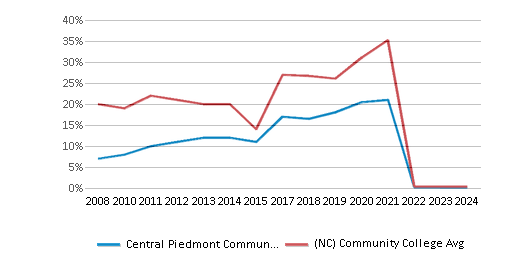
College Completion Rate (Students who graduate in 4 years or more than 4 years)
n/a
0.4286%
Average Graduate Earnings (10 Years)
$30,600
$27,500
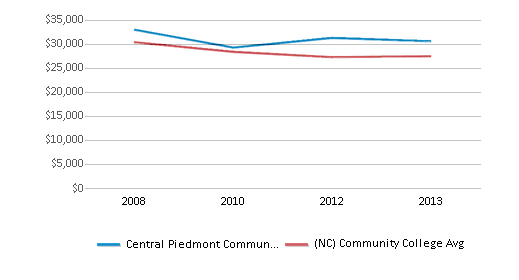
Tuition and Acceptance Rate
The public in-state tuition of $2,664 is less than the state average of $3,915. The in-state tuition has stayed relatively flat over four years.
The public out-state tuition of $8,808 is less than the state average of $9,508. The out-state tuition has stayed relatively flat over four years.
In-State Tuition Fees
$2,664
$3,915

Out-State Tuition Fees
$8,808
$9,508
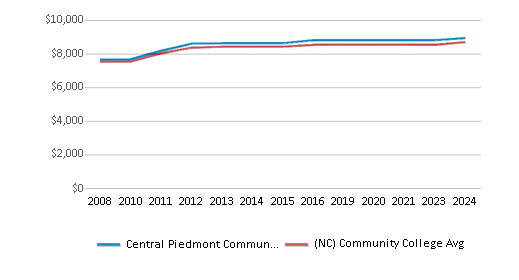
% Students Receiving Some Financial Aid
60%
82%
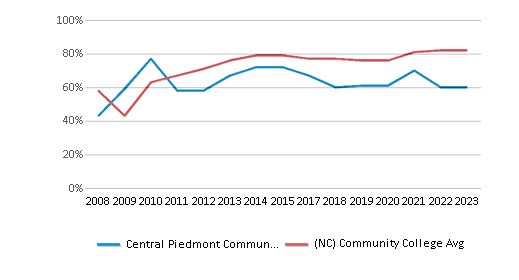
Median Debt for Graduates
$6,750
$11,865

Median Debt for Dropouts
$5,155
$5,846
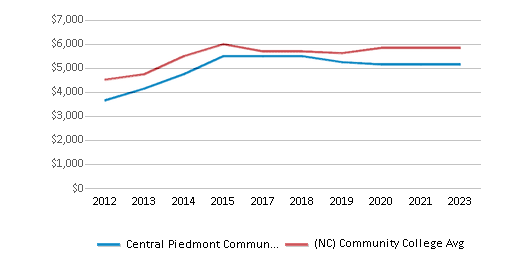
Acceptance Rate
n/a
82%
SAT Reading
n/a
488
SAT Math
n/a
498
ACT Composite
n/a
20
ACT English
n/a
13
ACT Math
n/a
16
Source: 2024 (or latest year available) Integrated Postsecondary Education Data System (IPEDS) , School Administrators
School Notes
- In 1963, Mecklenburg College and the Central Industrial Education Center were merged to establish Central Piedmont Community College, one the first of the 58 colleges in the NC Community College System. The substantial increase in the educational and training needs of the community since 1963 have required commensurate expansion of the College's instructional programs and facilities. In 1963, there were 23 degree and diploma programs; now there are more than 60, along with a comprehensive literacy program and an extensive array of corporate and continuing education offerings. In 1963, the College occupied the structures formerly used by Charlotte's Central High School. Recognizing that the Central Campus is experiencing maximum utilization, the College trustees in 1989 authorized the development of comprehensive campuses in other areas of Mecklenburg County to accommodate the ever increasing needs of the burgeoning Charlotte-Mecklenburg community. The College provides educational programs and services in Business, Community Service, Health, and Technology Programs; Transfer Programs; Queens Bound Program; Basic Skills Programs; Corporate and Continuing Education; Community Service and International Programs and Services. The college was fully accredited to award associate degrees, diplomas, and certificates in 1969 by the Commission on Colleges of the Southern Association of Colleges and Schools.
Frequently Asked Questions
How much does Central Piedmont Community College cost?
Central Piedmont Community College's tuition is approximately $2,664 for In-State students and $8,808 for Out-State students.
What is Central Piedmont Community College's ranking?
Central Piedmont Community College ranks among the top 20% of community college in North Carolina for: Diversity in US community colleges, Largest student body and Least debt for graduating students.
In what neighborhood is Central Piedmont Community College located?
Central Piedmont Community College is located in the Elizabeth neighborhood of Charlotte, NC.
Recent Articles

Obtaining Your Bachelor's Degree at a Community College
Explore the evolving landscape of community colleges offering bachelor's degrees, addressing affordability, accessibility, and workforce needs.

A to Z of Community College Certificates and Courses
From business and healthcare to technology and skilled trades, the article showcases the breadth of options available to students seeking to enhance their knowledge, develop new skills, or pursue career advancement.

What is a Community College?
This comprehensive guide explains what a community college is, its history, and its role in higher education. It covers the types of programs offered, differences from four-year colleges, benefits of attending, and important considerations for prospective students, providing valuable insights for those exploring educational options.

